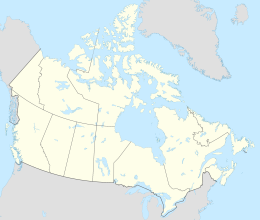| Geography | |
|---|---|
| Location | Northern Canada |
| Coordinates | 63°30′15″N64°20′00″W / 63.50417°N 64.33333°W [1] |
| Archipelago | Arctic Archipelago |
| Area | 271 km2 (105 sq mi) |
| Administration | |
Canada | |
| Territory | Nunavut |
| Region | Qikiqtaaluk |
| Demographics | |
| Population | Uninhabited |
Brevoort Island is a small, uninhabited island located in the Davis Strait off the eastern coast of Baffin Island in the Qikiqtaaluk Region of northern Canada's territory of Nunavut. The island is a member of the Arctic Archipelago and lies north of Cape Murchison, opposite the Cumberland Peninsula.

